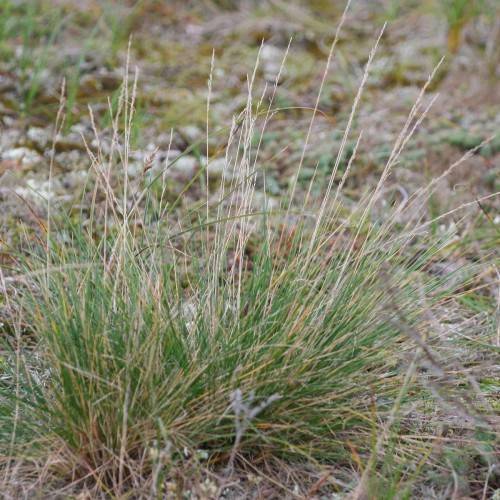
hard fescue
Festuca longifolia
Also Known As - fine fescueCycle:
Perennial
Watering:
Minimum
Hardiness Zone:
3 - 9
Flowers:
Flowers In Spring
Sun:
full sun,part shade
Fruits:
Fruits Ready In Fall
Leaf:
Yes
Growth Rate:
Low
Maintenance:
Moderate
Drought Tolerant:
Yes
Salt Tolerant:
Yes
Care Level:
Low
watering
Hard fescue should be watered when the top 1-2 inches of soil is dry. Avoid overwatering, as this can lead to root rot in hard fescue plants. The amount of water to provide depends on the weather conditions; a mature hard fescue plant should receive up to 1 inch of water per week in hot, dry weather. Water less often in cooler weather or if there is frequent rain. Avoid standing water, as it can cause fungal diseases. Too much watering also leaves less water available to the roots of the plant.
sunlight
Hard fescue (Festuca longifolia) prefers bright sunlight throughout the day, but it can tolerate some light shade in the afternoon. For optimal growth, it should receive at least 6 hours of direct sunlight each day. When grown in shady areas, it tends to become spindly and weak. Hard fescue is best suited to full sun but can tolerate some part shade. The plants will need most of their sunlight in the early part of the day when the sun’s rays are the strongest, as this will help kick off the photosynthesis process and get the plant ready for the rest of the day. The optimal sunlight requirement for hard fescue is around 8 hours of direct sunlight daily.
pruning
Hard fescue (Festuca longifolia) should be pruned in late summer or early fall, when the weather has cooled. It should be pruned no more than 1-third of the existing foliage at 1 time. This will help to maintain a healthy, vigorous growth and will prevent the plant from becoming too dense. To prevent tip-dieback, it is best to prune the growing tips of the plant first followed by pruning the lower stems. Pruning hard fescue should be done with sharp pruning shears and is best done in stages rather than taking a large amount off at once.
